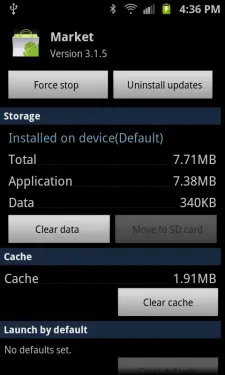如何以程序方式清除 Android 应用程序中的缓存?我已经使用以下代码,但它好像对我没有作用。
@Override
protected void onDestroy() {
// TODO Auto-generated method stub
super.onDestroy();
clearApplicationData();
}
public void clearApplicationData() {
File cache = getCacheDir();
File appDir = new File(cache.getParent());
if (appDir.exists()) {
String[] children = appDir.list();
for (String s : children) {
if (!s.equals("lib")) {
deleteDir(new File(appDir, s));
Log.i("EEEEEERRRRRRROOOOOOORRRR", "**************** File /data/data/APP_PACKAGE/" + s + " DELETED *******************");
}
}
}
}
public static boolean deleteDir(File dir) {
if (dir != null && dir.isDirectory()) {
String[] children = dir.list();
for (int i = 0; i < children.length; i++) {
boolean success = deleteDir(new File(dir, children[i]));
if (!success) {
return false;
}
}
}
return dir.delete();
}
